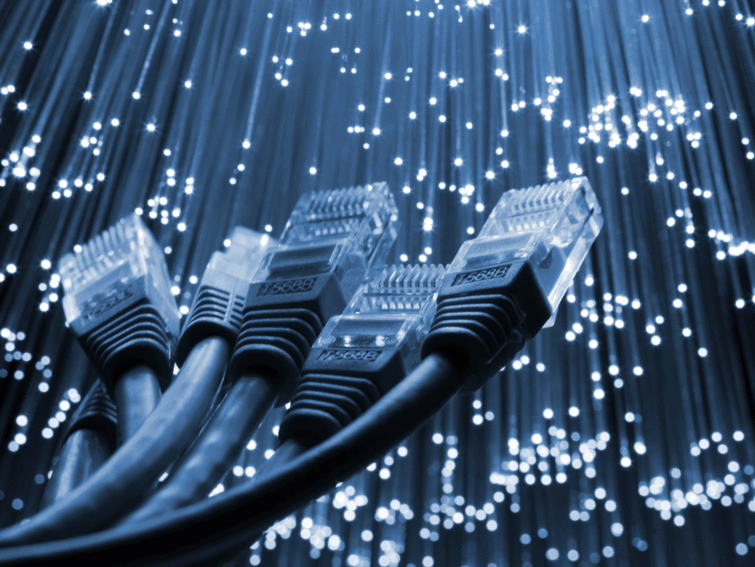Fibre to the TV

In 1925, inventor John Logie Baird demonstrated his early, mechanical version of television. Although this offered just 30 lines of resolution, the world was captivated and in just a few years TV sets became commercially available.
Although television is now also available over the internet, most programs still seem to be reaching our homes through old-fashioned coaxial cable. It would appear that although TV is ready to step into the future, it is being hindered by an ageing infrastructure.
ADVERTISEMENT
Today’s audience, used to the benefits of the internet, wants to watch their favourite shows at any time and they expect extra services, content and information. Time-shift viewing and services such as Hulu meet this demand to some extent. But all too often viewers are forced to choose between the immersive, collective TV/home cinema experience and laptop viewing – albeit with the benefit of extra services and a wider range of choices.
The rise of cloud computing and developments in payment technologies and licensing legislation means consumers can conveniently buy and store vast personalised media libraries – but they’ll have to watch their purchases on PCs or smart phones.
According to a survey conducted by Research and Markets on internet television, called Global IPTV Market Forecast to 2014, the number of global internet TV subscribers is expected to surpass 106 million by 2014. Another report, called IPTV: A Global Analysis, states that internet-connected TVs will surpass worldwide game console sales this year. However, today’s TV cable and internet connections simply won’t be able to accommodate the bandwidth demand that this implies.
Clearly, there is a strong need to boost network capacity in order to maximise the potential that today’s television has to offer. A cost-effective, future-proof solution is required, that will make sure TV can reach the next level, and which can accommodate new technologies, such as 3D Ultra HD.
Fibre to the Home (FTTH) offers exactly that. Furthermore, optical fibre allows higher cable density than copper, which means more data and more channels. Light signals don’t interfere like electrical signals do, resulting in less static and negligible interference. Also, optical signals are harder to hack.
Fibre to the Home networks can offer the highest speeds, even when standard Ethernet or coaxial cable is used for the last few metres in the chain. Optical technology not only boasts extremely high audio and video quality and an unlimited number of channels, it also offers interactivity and makes additional features possible.
Multiple streams can be viewed and recorded simultaneously and Video on Demand (VoD) is easily accessible. FTTH offers the service, flexibility and reliability required to support all kinds of exciting new broadcasting business models. FTTH allows multiple users, in one household, to stream data-rich content in real-time. This includes wireless distribution to mobile devices such as iPads and other tablets. As FTTH is a ‘fixed line’ technology, each consumer’s identity is known to the provider.
This implies a high level of security for online transactions, such as ‘pay TV’. Also, user profiles can be created, allowing for targeted content suggestions and user-specific targeted advertising. Broadcasters and advertisers can now think of TV as a two-way channel, through which viewers can offer feedback and suggestions.
The possibilities are endless, just consider real-time linking of TVs and game consoles, or high definition, multi-user video chat sessions.
Forward-looking companies are already leading the way. Google TV, for example, merges television viewing, online gaming, web surfing and social networking into one single experience. Last year, the number of registered iTunes users surpassed 500 million. Apple’s digital media receiver (Apple TV) plays back content purchased by the 125 million iTunes store users. The success of the BBC iPlayer, NetFlix and Hulu demonstrate that there is a large global audience hungry for this type of programming. However, as these technologies become more widespread, they will also further increase the strain on available bandwidth. With traditional broadband and cable networks, programmes may jitter and repeatedly pause in order to buffer, which means a lot of customer complaints.
New, interactive ways of ‘consuming’ TV are leading to increasing convergence between the worlds of broadcast and broadband, and operators and content providers need to act upon this. And when it comes to broadband, FTTH is the most high-tech, reliable, enduring and cost-effective solution.
Advanced tools and solutions make it easier than ever to hook up houses, blocks and apartment buildings. Optical fibre offers vast bandwidth, and in the future significant upgrades can be made directly on terminal equipment, with no need to replace the fibre itself.
In short, tomorrow’s television will only realise its full potential if it’s fibre-powered.
FTTH Council Europe
www.ftthcouncil.eu
-
ADVERTISEMENT
-
ADVERTISEMENT

